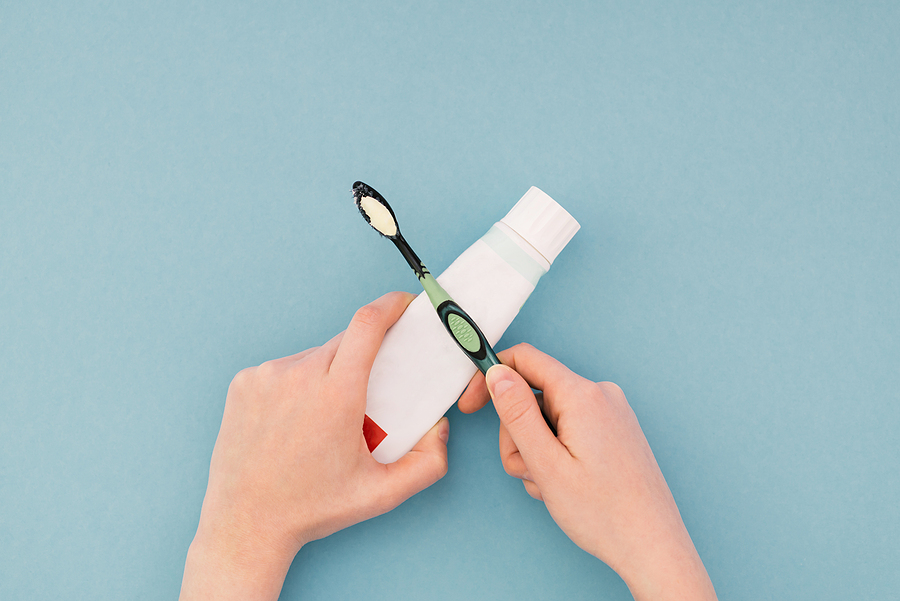One of the great things about being in practice for more than three decades is that I’ve been able to see exciting new research and development emerge –- and also witness the medical and scientific communities retract mistakes and give credence to things that were dismissed years ago.
Remember when butter was “bad” and margarine was “good” for you? We now know that margarine contains trans fats that can contribute to heart disease and that butter can be a healthy part of a balanced diet. But it took quite some time to undo all the biased research and get to the truth.
In recent years, another chemical has been at the heart of scientific debates and media reports: fluoride. Why are these conversations about fluoride important?
The idea that chemicals can have a negative impact on our body functions was something much of the scientific world did not want to admit for many years. But now, more and more research is being done both to show the effects of drugs, chemicals and endocrine disruptors on our bodies and to identify all of the many health conditions they can cause or exacerbate, including the disruption of proper thyroid function.
This is so thrilling for me to see, because my functional medicine colleagues and I have been talking about it for decades!
After World War II, reports emerged that in some areas of the world that had naturally higher fluoride levels in their water, people had better dental health. That spurred the beginning of adding fluoride to the water supply, which first happened in Michigan. Soon after, many communities jumped on the bandwagon.
Despite the fact that manufactured fluoride should never be swallowed (just read the poison warning label on a tube of toothpaste) somehow it was believed that adding it to water and drinking it would improve our dental health. And it actually did seem to decrease dental caries.
But even many years ago, the literature detailing the danger of consuming fluoride was compelling enough that I worked hard when my children were young to make sure they didn’t have fluoride treatments when they went to the dentist.
Today it’s estimated that about 70% of Americans live in communities with fluoridated water. Elsewhere in the world this practice is not prevalent and, in fact, countries that have naturally high fluoride levels in their water are taking steps to remove that natural fluoride and bring the levels down.
Here in Maine, some communities are on well water but almost all of the towns with public water supplies add fluoride to the water. My patients often ask me if they should be concerned about fluoride and whether they should filter their water or buy bottled water instead.
In this article, I’ll give you important information about water, dental health, and the impact of fluoride on thyroid health. Then, I’ll give you some quick tips on minimizing exposure to fluoride.
What is fluoride?
First things first — what exactly is fluoride and where does it come from?
The fluoride we’re talking about is a chemical ion of the element fluoride, the 13th most abundant mineral on the earth’s crust. It has one extra electron, giving it a negative charge and it is found naturally in water, soil, foods and other minerals.
Fluoride is also synthesized in labs and added to water, toothpaste, mouthwash, and other chemical products. It’s also found in foods that are processed using fluoridated water.
When vitamins and minerals are lab-created, they are not as readily absorbed as their naturally occurring counterparts. And while fluoride may not be harmful, and in fact may even be beneficial, in small doses from natural sources, the lab created form can cause harm in the body. That’s because the body sees it not as a natural substance but as a toxin.
Is added fluoride in water safe?
That is the million dollar question.
It’s difficult to study, since assigning participants to ingest fluoride and track negative results is unethical and dangerous. That means we can only look at the health impacts in individuals already exposed to fluoride – mainly in the water supply – and observe associations, rather than definitively pinpoint cause/effect relationships. Still, the evidence we do have is strong enough to give me – and many others – pause.
As more research emerges, the controversy continues. The World Health Organization has actually said that high doses of fluoride can damage teeth rather than protecting them, while other research indicates serious side effects from high fluoride levels, including bone cancer and cognitive impairments. That’s partly why many North American communities have voted to stop adding fluoride to their water supplies.
In 2019, the topic was once again in the headlines when respected news outlets like Time Magazine reported on the results of a study published in JAMA Pediatrics that found that high exposure to fluoride during pregnancy was correlated with lower IQ scores in young children, particularly boys.
I believe that the longer we study the impacts of fluoride on health, the more we will understand that, like any lab created chemical, we’re better off avoiding it.
How Fluoride Affects Your Thyroid
In its natural form, fluoride is found in seawater at about 1.3 parts per million (or ppm). In water, natural fluoride levels are typically .01 to .3 ppm.
Some places, such as China, can have areas where the fluoride levels in natural water are high enough that it has been traced to health conditions. In these areas, efforts are being made to remove natural fluoride from the water.
That’s so different from the US, where we are adding a lab-created chemical to our water in the name of better health. In 2015, a British study revealed some startling results about fluoride’s impact on the thyroid after examining different areas in England, some of which fluoridated and some of which did not.
The study found that the rates of hypothyroidism, which is an underactive thyroid, were double in the areas where fluoride was added to the water versus the non-fluoridated areas.
Hypothyroidism rates are increasing dramatically in the U.S.. The association between fluoridated water and hypothyroidism validated my long held suspicion that fluoride can be a big problem for our health.
The study also found that whenever the concentration of fluoride was above 0.3 ppm, rates of hypothyroidism were as much as 30% higher. We just saw that the high end of natural fluoride levels is exactly that same level, but that is for natural fluoride.
What could much higher levels of synthetic fluoride do?
EPA announces fluoride rates are too high
Until a few years ago, the agreed upon acceptable rate of (synthetic) fluoridation levels in US water fell within the range of 0.7 and 1.2 ppm, despite the study’s noted health concerns at levels above 0.3.
To put it in perspective, studies have shown that in a healthy 154-pound person, 3.5 mg of fluoride was found to disrupt thyroid function. If water fluoridation is allowed up to 1.2 ppm and you drink water regularly, you can easily exceed that rate.
The Environmental Protection Agency (EPA) estimates that the average American ingests 3 mgs a day but adds that many of us consume more than 6 mg a day! That’s almost double the level that was found to impair thyroid function.
Iodine deficiency, another common health problem, compounds the issue. In a person with deficient iodine levels, as little as .07 mg a day could damage thyroid function. That could be a glass or two of water a day!
That’s why it was good news when the Department of Health and Human Services announced that it was changing the maximum level to 0.7 in 2015. At least it was the beginning of acknowledging that there is a problem.
At my practice, I’ve been concerned about added fluoride for some time.
I know too much fluoride can impact not just the thyroid but also many other body functions. While it’s great to have attention paid to the problem, I wish the announcement came because experts were connecting the dots to all of the health concerns associated with excess fluoride.
Instead, that announcement was the result of a CDC revelation that 40% of Americans have dental fluorosis, a condition that changes the appearance of your tooth enamel. It can cause chalky-like lines, pitting and staining on your teeth. That means that 2 out of 5 of us are experiencing permanent damage to our teeth from the chemical that was supposed to keep them healthy!
But, as I’ve been saying, those unsightly stains and blotches on your teeth are not the biggest concern. If your teeth are seeing the damage then fluoride is most likely having an impact in other areas of your body as well. That’s because once fluoride is swallowed, it accumulates in your body’s bones and tissues.
Teeth fluorosis may also mean you have skeletal fluorosis, which is very hard to distinguish from arthritis. Skeletal fluorosis can result in fatigue, muscle weakness, gastrointestinal disorders and ultimately stiff joints, calcification of tendons and ribs, and osteoporosis.
Despite the good intentions around fluoride, neither the CDC nor the World Health Organization have been able to identify any differences in tooth decay and dental health between countries that fluoridate versus countries that do not follow that practice.
In addition to the less than stellar dental results and the direct link to thyroid dysfunction, fluoride has also been identified as an endocrine disruptor that can lead to reproductive problems and cancers as well as many other health concerns.
So with little good and a host of concerns, I find myself asking why do we continue the practice of adding lab created chemicals to our drinking water?
I suspect that some day, society will look back and call this one of the great medical experiments that did not end well. And with all the fluoride in foods processed with fluoride-rich waters, we’re likely taking in more than we should even without the amounts found in water, toothpaste and other dental products.
Tips to avoid fluoride exposure
So what can we do to avoid accumulating too much fluoride in our tissues? Although fluoride can’t be entirely avoided, we can certainly be aware of its presence and work to reduce exposure. Here are some easy tips to get you started:
- Avoid bottled water. It often contains hidden fluoride as well as BPA and other chemicals from the plastic it’s packaged in.
- If you have fluoridated tap water, look into a filter that is proven to remove fluoride.
- Be extra careful not to swallow any toothpaste or dental rinse.
- Eat more iodine-rich foods such as sea vegetables, saltwater fish and other seafood, or iodized sea salt to offset the impact to your thyroid.
- Get your thyroid tested. This is especially true for women during perimenopause, but if you’ve been exposed to fluoridated water all your life or you are seeing any dental spotting or staining, you should definitely get your thyroid tested.
- Take a high quality multivitamin to support your body’s healthy response to exposure and elimination of toxins.
Final thoughts on fluoride and thyroid
We cannot change the world but we can change our response to it.
If you are experiencing perimenopausal or PMS symptoms and struggle to feel good, it may be your thyroid function. Or, maybe your body’s need to rebalance from toxic exposures so that your hormones can realign. Whatever the case, making sure you speak to your health practitioner about it and explore treatment possibilities – your health and happiness is worth it!








